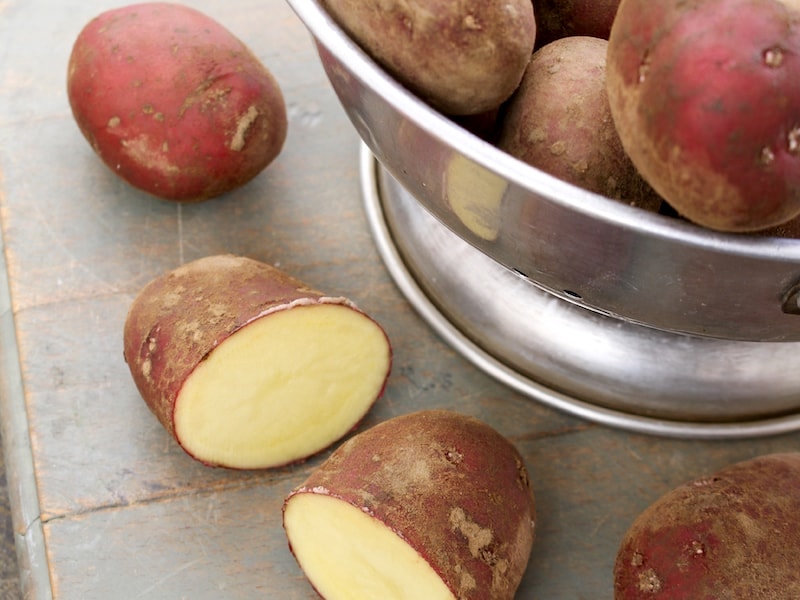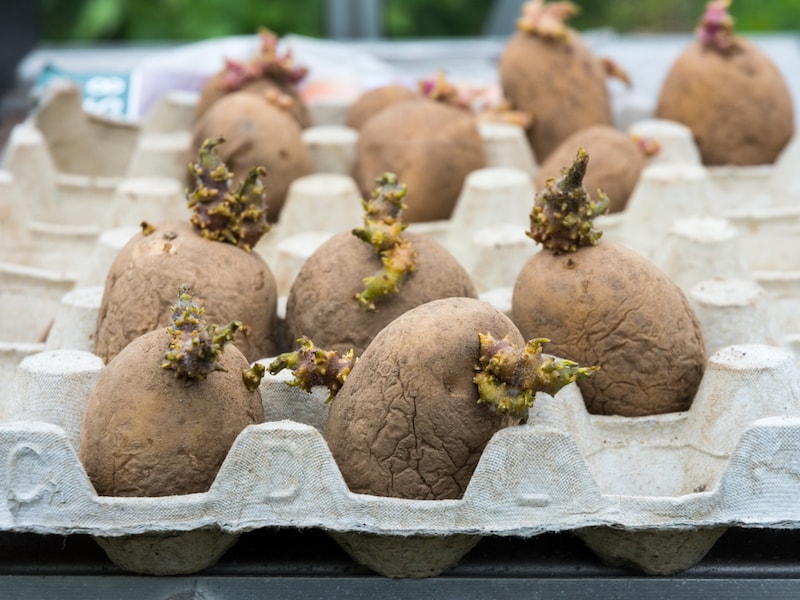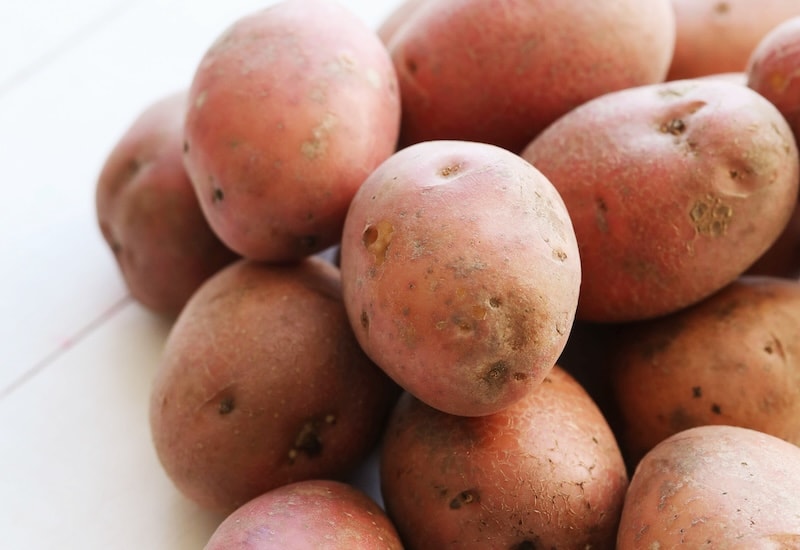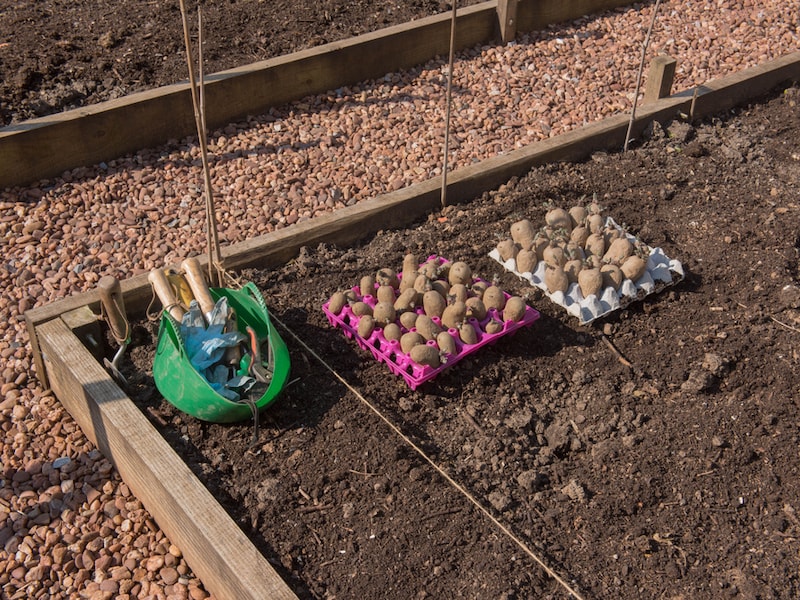To chit or not to chit your seed potatoes is a much debated question. We think you should definitely chit your first and second early varieties. For maincrop spuds, it’s less important, but still a good idea if you have time. Giving them a head start means you’re more likely to get an earlier and slightly improved harvest. Here’s everything you need to know about chitting seed potatoes.
This article was checked and updated by Suttons horticultural team on 14 January 2025
What is chitting?
Chitting is the process of encouraging seed potatoes to generate sturdy sprouts ready for when it’s time to plant them in the ground. By exposing your seed potatoes to plenty of light and warmth, you spur them out of dormancy and into growth mode, the result being an earlier harvest and hopefully a somewhat more bountiful one too.
Why should you chit your potatoes?

Image: Seed potatoes ‘Red Duke of York’ (first early) from Suttons
Getting your potatoes into the ground when they’re already activated and ready to grow is one of the best ways to avoid potato blight. This devastating disease can ravage an entire crop in a matter of days and the chances of your crop contracting it increases as the days grow warmer. In fact, all it requires to become a threat is two consecutive nights when the ambient temperature fails to drop below 10C.
Clearly, early spring is the best time to get your spuds into the ground and growing, and well-chitted potatoes with strong sprouts are more robust and therefore less susceptible to disease too – the benefits of chitting are manifold.
When should you chit potatoes?
Start chitting your seed potatoes about six weeks before you hope to plant them – from late January is about right. It will be time to plant when the soil starts to warm up, so between mid-March to early April, depending on where you live and the prevailing weather conditions at the time.
How to chit seed potatoes?

Image: J Davidson/Shutterstock
Seed potatoes have a blunt end, called the rose end, with eyes from which the sprouts will form. Place the potatoes into old egg cartons or seed trays, in a single layer, with the rose end facing up. Keep them in a light, frost-free room like a spare bedroom, potting shed or greenhouse.
Ideally the sprouts should remain small (about 2.5cm long) and knobbly and be a green/purple colour. If they grow long and white then there’s insufficient light.
Should you remove some sprouts from your seed potatoes?

Image: Potato ‘Caledonian Rose’ from Suttons
If your seed potatoes produce too many sprouts, you’ll end up with lots of small spuds. In fact, for your first early seed potato varieties, you only need two or three sprouts per potato. For maincrop varieties, three or four sprouts per potato is ideal. To remove unwanted extra sprouts, just carefully rub them off or cut them with a sharp knife to prevent them from re-sprouting.
How to plant chitted seed potatoes

Image: Peter Turner Photography/Shutterstock
For early varieties, plant your chitted potatoes 7–10cm (3–4″) deep, about 30cm (12″) apart. Leave approximately 45cm (18″) between each row. Second earlies need a little bit more space, and maincrop varieties require more still. Plant main crops 37cm (15″) apart with 67cm (27″) between rows.
When you’re planting chitted potatoes, please handle them with care. The sprouts may look sturdy enough but they’re easily knocked off. Ease them into the ground and gently firm them in, making sure to eradicate any air pockets.
Although some gardeners don’t bother to chit their potatoes, we say it offers a distinct head start and helps to avoid the dreaded blight. For more information, please see our comprehensive article on how to grow potatoes.
Lead image: Potatoes ‘Maris Peer’ from Suttons
Last Updated on January 14, 2025 by Suttons Horticultural Team





i have 2Kg of seed potatoes [charlote potatoes about 30 or more can i put them in unheated greenhouse 10 x 8 foot it dose get a bit cold in yorkshire
thankyou
john harper